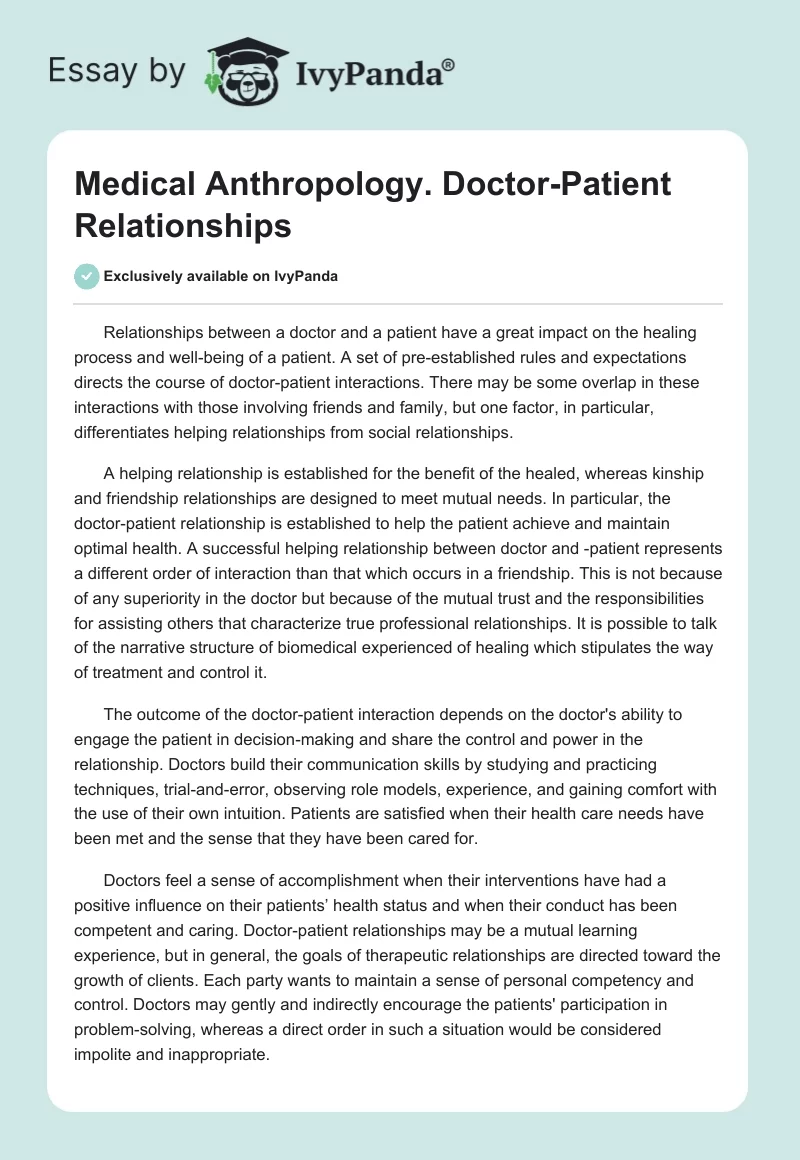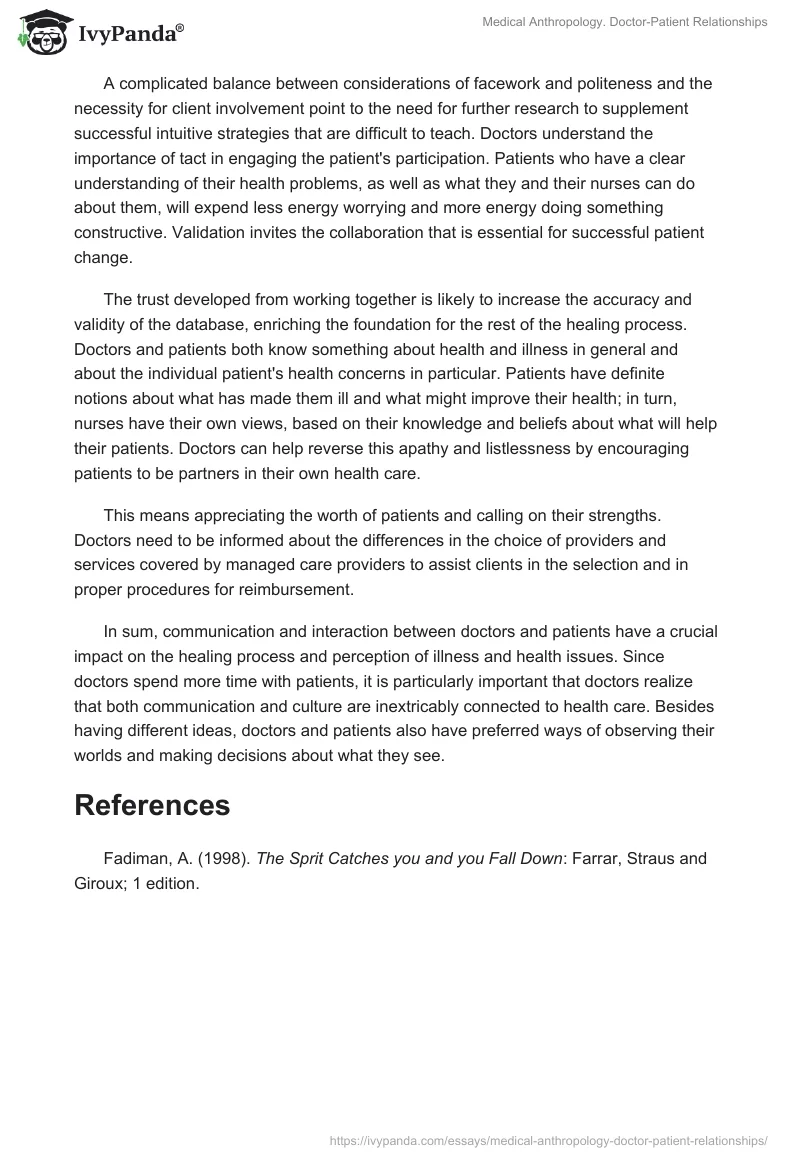Relationships between a doctor and a patient have a great impact on the healing process and well-being of a patient. A set of pre-established rules and expectations directs the course of doctor-patient interactions. There may be some overlap in these interactions with those involving friends and family, but one factor, in particular, differentiates helping relationships from social relationships.
A helping relationship is established for the benefit of the healed, whereas kinship and friendship relationships are designed to meet mutual needs. In particular, the doctor-patient relationship is established to help the patient achieve and maintain optimal health. A successful helping relationship between doctor and -patient represents a different order of interaction than that which occurs in a friendship. This is not because of any superiority in the doctor but because of the mutual trust and the responsibilities for assisting others that characterize true professional relationships. It is possible to talk of the narrative structure of biomedical experienced of healing which stipulates the way of treatment and control it.
The outcome of the doctor-patient interaction depends on the doctor’s ability to engage the patient in decision-making and share the control and power in the relationship. Doctors build their communication skills by studying and practicing techniques, trial-and-error, observing role models, experience, and gaining comfort with the use of their own intuition. Patients are satisfied when their health care needs have been met and the sense that they have been cared for.
Doctors feel a sense of accomplishment when their interventions have had a positive influence on their patients’ health status and when their conduct has been competent and caring. Doctor-patient relationships may be a mutual learning experience, but in general, the goals of therapeutic relationships are directed toward the growth of clients. Each party wants to maintain a sense of personal competency and control. Doctors may gently and indirectly encourage the patients’ participation in problem-solving, whereas a direct order in such a situation would be considered impolite and inappropriate.
A complicated balance between considerations of facework and politeness and the necessity for client involvement point to the need for further research to supplement successful intuitive strategies that are difficult to teach. Doctors understand the importance of tact in engaging the patient’s participation. Patients who have a clear understanding of their health problems, as well as what they and their nurses can do about them, will expend less energy worrying and more energy doing something constructive. Validation invites the collaboration that is essential for successful patient change.
The trust developed from working together is likely to increase the accuracy and validity of the database, enriching the foundation for the rest of the healing process. Doctors and patients both know something about health and illness in general and about the individual patient’s health concerns in particular. Patients have definite notions about what has made them ill and what might improve their health; in turn, nurses have their own views, based on their knowledge and beliefs about what will help their patients. Doctors can help reverse this apathy and listlessness by encouraging patients to be partners in their own health care.
This means appreciating the worth of patients and calling on their strengths. Doctors need to be informed about the differences in the choice of providers and services covered by managed care providers to assist clients in the selection and in proper procedures for reimbursement.
In sum, communication and interaction between doctors and patients have a crucial impact on the healing process and perception of illness and health issues. Since doctors spend more time with patients, it is particularly important that doctors realize that both communication and culture are inextricably connected to health care. Besides having different ideas, doctors and patients also have preferred ways of observing their worlds and making decisions about what they see.
References
Fadiman, A. (1998). The Sprit Catches you and you Fall Down: Farrar, Straus and Giroux; 1 edition.


